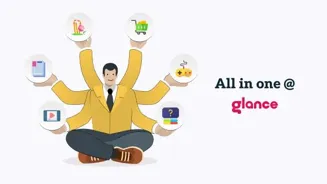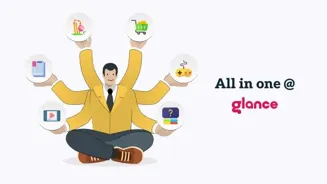Unlock Your Career Potential: 8 Steps to Success! Dive into strategies for a seamless career shift
The Indian job market, a vibrant and ever-evolving landscape, presents both exciting opportunities and daunting
challenges.
Many professionals, at some point in their careers, find themselves contemplating a transition – a shift to a new industry, a different role, or even starting their own venture.
Whether driven by a desire for growth, a need for change, or the pursuit of a long-held passion, navigating a career transition successfully requires careful planning and a strategic approach. Jumping into something new without proper groundwork can lead to frustration and disappointment.
This article outlines eight key steps to help you make your next career move with confidence and achieve your professional goals. Think of it as your personal roadmap to a fulfilling and rewarding career journey. Remember, a well-thought-out plan is half the battle won!
Introspection and Self-Assessment: Knowing Yourself
Before even glancing at job postings or networking with industry contacts, the most crucial step is to delve deep into self-assessment. It's about honestly evaluating your skills, values, interests, and what truly motivates you.
Ask yourself some hard-hitting questions: What are you genuinely good at? What tasks do you find energizing, and which ones drain you? What are your core values – what principles are non-negotiable in your work life? Identifying your strengths and weaknesses is essential.
What skills do you excel at, and what areas need improvement? Tools like skills assessments, personality tests available online can provide valuable insights. Reflect on your past experiences, both positive and negative. What did you learn from those situations?
What kind of work environment thrives you? Understanding your preferences allows you to target roles and industries that align with your personality and work stlye. This introspection forms the foundation for a successful career transition.
Explore Possibilities: Research and Identify Potential Paths
Once you have a clear understanding of yourself, it's time to explore the vast landscape of career possibilities. Expand your horizons beyond your current industry or role. Research different sectors, companies, and job titles that align with your skills and interests.
Online resources like LinkedIn, Glassdoor, and industry-specific websites can provide valuable information about job descriptions, salary ranges, and company cultures.
Attend industry events, webinars, and workshops to learn about emerging trends and network with professionals in your desired fields. Don't be afraid to reach out to people working in roles that pique your interest.
Informational interviews are a fantastic way to gain firsthand knowledge and insights into different career paths. Ask them about their experiences, challenges, and what they enjoy about their work.
This exploration phase helps you narrow down your options and identify potential career paths that are a good fit for you. Remember, the more information you gather, the better equipped you will be to make an informed decision.
Skill Gap Analysis: Bridge the Divide
After identifying potential career paths, it's time to honestly assess the gap between your current skill set and the skills required for your desired roles. This involves comparing your existing skills with the job requirements and identifying areas where you need to upskill or reskill.
Create a list of the skills you need to acquire or enhance. Are there any technical skills, software proficiencies, or industry-specific knowledge that are essential for your target roles? Once you have identified these gaps, develop a plan to bridge them.
Consider enrolling in online courses, workshops, or certifications to acquire the necessary skills. Look for opportunities to gain practical experience through internships, volunteer work, or side projects.
Mentorship from experienced professionals can also be invaluable in guiding your learning and development. Addressing these skill gaps proactively will significantly increase your chances of landing your desired role.
Focus on specific, measurable, achievable, relevant, and time-bound (SMART) goals to make your learning journey more effective.
Networking and Building Connections: Your Support System
Networking is an indispensable part of any successful career transition. Building a strong network of contacts can open doors to new opportunities, provide valuable insights, and offer much-needed support during your job search.
Attend industry events, conferences, and workshops to meet with professionals in your desired field. Reach out to people on LinkedIn and connect with them, be it colleagues, friends or acquaintances. Don't be afraid to ask for informational interviews or mentorship.
Networking is not just about collecting contacts. It's about building genuine relationships based on mutual respect and trust. Offer your assistance to others and be willing to share your knowledge and expertise. Remember, networking is a two-way street.
The more you invest in building your network, the more it will pay off in the long run. Leverage social media platforms to connect with industry leaders and stay updated on the latest trends. Actively participate in online communities and forums to engage in relevant discussions.
Resume and Cover Letter Optimization: Making a Strong Impression
Your resume and cover letter are your first impression on potential employers. They need to be clear, concise, and tailored to the specific roles you are applying for. Highlight your relevant skills and experiences, emphasizing achievements and quantifiable results.
Use keywords from the job description to ensure that your resume is easily searchable by applicant tracking systems (ATS). Tailor your cover letter to each job, explaining why you are interested in the role.
Proofread your resume and cover letter carefully to ensure there are no grammatical errors or typos. Seek feedback from friends, mentors, or career counselors to get their perspective on your application materials. Make sure your resume is visually appealing and easy to read.
Use a professional font and format. Quantify your achievements whenever possible to demonstrate the impact you have made in your previous roles. A well-crafted resume and cover letter will increase your chances of getting an interview.
Interview Preparation: Acing the Test
Once you have secured an interview, thorough preparation is crucial. Research the company thoroughly, understanding its mission, values, and recent news.
Practice answering common interview questions, such as "Tell me about yourself," "What are your strengths and weaknesses," and "Why are you interested in this role?
" Use the STAR method (Situation, Task, Action, Result) to structure your answers and provide specific examples of your accomplishments. Prepare thoughtful questions to ask the interviewer. This demonstrates your interest in the role and company.
Practice your interview skills with a friend or family member. Mock interviews can help you improve your confidence and communication skills. Dress professionally and arrive on time for the interview. Be enthusiastic and engaged throughout the conversation.
Follow up with a thank-you note after the interview to reiterate your interest in the role. Remember, the interview is not just about answering questions. It's also about building a connection with the interviewer and showcasing your personality and fit for the company culture.
Embrace Flexibility and Persistence: Staying the Course
Career transitions can be challenging, and it's important to be prepared for potential setbacks. Don't be discouraged if you don't land your dream job right away. Be patient and persistent in your job search. Network with as many people as possible.
Continuously refine your skills and knowledge, embracing the opportunities brought on. Stay positive! Sometimes, the perfect fit takes time and a little bit of luck.
Continuous Learning and Development: Staying Ahead of the Curve
The job market is constantly evolving, so it's essential to commit to continuous learning and development. Stay updated on the latest trends and technologies in your industry. Take online courses, attend workshops, and read industry publications to expand your knowledge and skills.

Continuously assess your career goals and adjust your plan as needed. Be open to new opportunities and challenges. Continuous learning will not only enhance your career prospects but also keep you engaged and fulfilled in your work.
Set aside time each week to dedicate to learning and professional development. Join professional organizations relevant to your field to network and stay informed.
By embracing a growth mindset and committing to lifelong learning, you can stay ahead of the curve and achieve long-term career success.
By following these eight steps, you can navigate your career transition with confidence and create a fulfilling and rewarding professional journey.
Remember, a well-planned and strategic approach is the key to success. All the very best to you!
AI Generated Content. Glance/InMobi shall have no liability for the content











